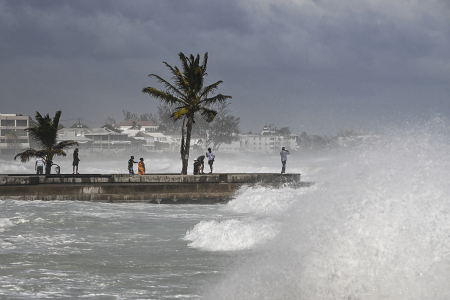Evangelical group airlifts 24 tons of relief supplies to victims of Hurricane Beryl

Hurricane Beryl, a Category 3 storm with winds of 120 mph, is wreaking havoc across the Caribbean, including the Cayman Islands, having already impacted Jamaica and Grenada and resulting in at least 10 fatalities. In response, the North Carolina-based evangelical relief organization Samaritan’s Purse has airlifted over 24 tons of emergency supplies and a team of specialists to the affected regions.
On Wednesday, Hurricane Beryl unleashed its most intense winds along Jamaica’s southern coast, while relentless heavy rain and fierce winds battered a broader region, CNN reported early Thursday. From 1 p.m. on Wednesday to 1 a.m. on Thursday, Kingston endured wind gusts approaching 50 mph for 12 straight hours, with gusts exceeding 80 mph by late afternoon, the cable channel added.
Early Thursday morning, Hurricane Beryl was positioned about 50 miles southwest of Grand Cayman and 385 miles east-southeast of Tulum, Mexico, The Associated Press reported. The hurricane had maximum sustained winds of 120 mph and was moving west-northwest at a speed of 20 mph.
As Hurricane Beryl moved west-northwest, it remained a formidable threat with hurricane-force winds extending 45 miles from its center.
Early Thursday, Grand Cayman experienced wind speeds with gusts exceeding 50 mph and a storm surge anticipated to reach up to 4 feet. The island was also facing heavy rainfall, with rates potentially leading to flash flooding.
Samaritan’s Purse has quickly mobilized its Disaster Assistance Response Team, dispatching a DC-8 from Greensboro, North Carolina, loaded with vital supplies, including tarps, solar lights, water units and a mobile medical unit. The effort is part of their mission to provide immediate relief and support to the hardest-hit communities, the group said in a statement to The Christian Post.
“We started building out pallets of cargo before the hurricane even made landfall and are now on the way with life-saving aid,” said Franklin Graham, president of Samaritan’s Purse, urging believers to join him “in praying for the families who are in the path of this storm, and for our Samaritan’s Purse staff who will be serving them.”
The Evangelical relief organization’s efforts are coordinated with local church partners to ensure effective distribution of resources.
Guy Vital-Herne, the communications manager for World Vision, expressed concern for regions like Haiti, predicting catastrophic impacts if the storm were to hit, given the country’s vulnerability to flooding and infrastructure challenges.
Christian Aid’s Chief of U.K. Advocacy, Sophie Powell, drew attention to the wider implications of such storms, stressing the need to allocate more funds to rebuild in the areas devastated by natural disasters.
“These are the people that desperately need loss and damage finance to help them rebuild their lives and livelihoods,” Relief Web quoted Powell as saying. “You cannot simply adapt to a category 5 hurricane destroying your home or killing your family. These are losses that need to be compensated and it’s why getting more finance into the Loss and Damage Fund needs to be a major priority.”
As Beryl continues its path, the Cayman Islands brace for continued severe weather with expectations of 4- to 6-inches of rainfall throughout the day, exacerbating the risk of further flooding and damage. Meanwhile, the hurricane has already inflicted severe damage across the Windward Islands, escalating into a Category 5 storm as it hit Grenada, causing widespread destruction and power outages.
The hurricane had claimed at least 10 lives across the region, as of early Thursday, with the death toll expected to rise as recovery efforts continued.
In Jamaica, the storm led to power outages and significant agricultural damage, particularly affecting plantain and banana crops.
Communities across the Caribbean are reeling from the impact, with Hurricane Beryl roaring toward Mexico.
Forecasters predicted that Beryl would hit land in a lightly populated region of lagoons and mangroves south of Tulum early Friday, likely as a Category 2 storm. After crossing the Yucatan Peninsula, it was anticipated to regain strength over the warm waters of the Gulf of Mexico before making a second landfall on Mexico’s northeast coast near the Texas border.





















